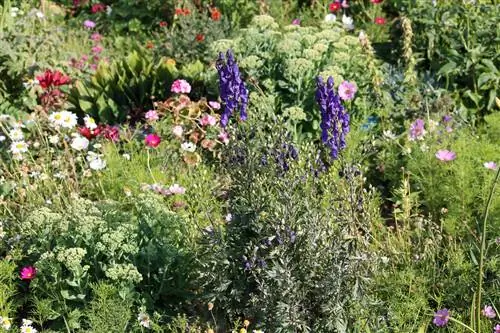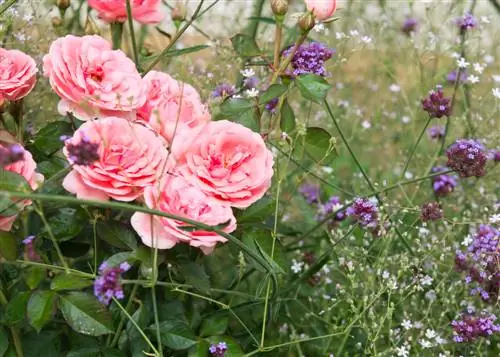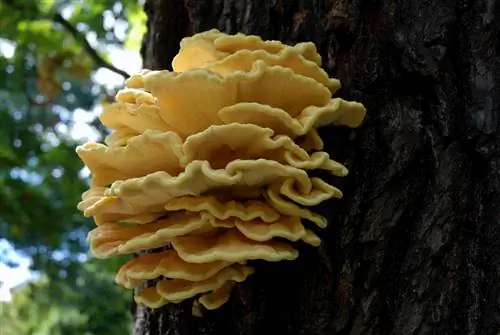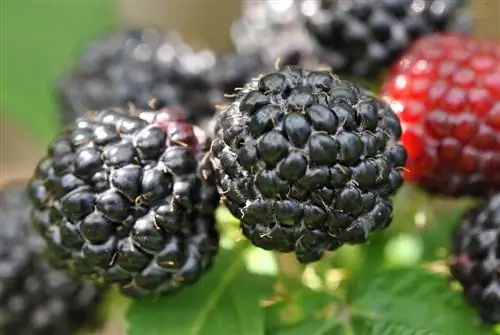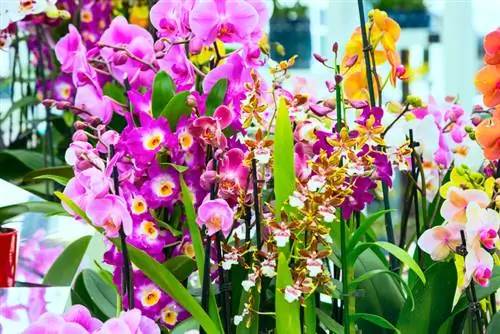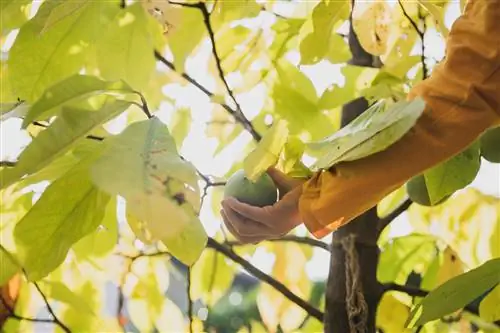- Author admin [email protected].
- Public 2023-12-16 16:46.
- Last modified 2025-01-23 11:22.
The garden becomes a snail-free zone if the snails don't like the plants. A perennial must have certain characteristics to be slug-proof. This guide addresses the question of whether snails eat or avoid monkshood (aconitum).

Is monkshood eaten by snails?
Monkshood (Aconitum) issnail-resistantbecause the plant isstrongly poisonous. The deadly toxin aconitine is contained in all parts of the plant and is perceived by snails. That's why monkshood is not eaten by snailsAs an anti-snail plant, monkshood is only suitable out of the reach of children.
Which plants are not eaten by snails?
Plants protect themselves from snail damage withpoisonous ingredientsPrime examples are lily of the valley (Convallaria) in spring and foxglove (Digitalis) in summer. Furthermore, snails do not eat plants withhairy leaves, such as geranium (Geum) and geranium (Pelargonium). Thefleshy leavesof houseleeks (Sempervivum) spoil the appetite of snails, as do theleathery-hard leaves of the bergenia (Bergenia).
Is monkshood snail resistant?
Monkshood (Aconitum napellus) is considered themost poisonous plantin Europe and is thereforesnail-resistant The high poison content of up to 3 percent aconitine represents a fatal danger to humans and animals. Eating just 0.2 grams of monkshood causes significant symptoms of poisoning in people. For an adult, the lethal dose is 2 to 4 grams of fresh monkshood root. Snails sense the deadly poison from a distance and give the monkshood a wide berth.
Can you plant monkshood in the anti-slug bed?
For thefamily gardenthe poisonous monkshood isnot suitable Out of the reach of children and pets, the monkshood shines in the anti-snail bed with spectacular flowers. Read these tips on location, varieties and snail-resistant planting partners:
- Monkshood varieties: Blue monkshood (Aconitum napellus), white monkshood (Aconitum 'Alba'), violet-blue autumn monkshood 'Arendsii' (Aconitum carmichaelii).
- Location: partially shaded, nutrient-rich, fresh and moist.
- Snail-resistant plant neighbors: Noble lilies (Impatiens New Guinea hybrids), great cranesbill (Geranium 'Rosemoor'), tall sedum (Sedum 'Matrona'), checkerboard flower (Fritillaria meleagris), diamond grass (Achnatherum brachytrichum).
- Precautions: Gloves, long-sleeved clothing or overalls, safety glasses, rubber boots.
Tip
Monkshood is a bumblebee willow
Monkshood and bumblebees are a well-rehearsed team. The large flowers are perfectly adapted to bumblebees as pollinators. The upper, helmet-shaped petal protectively encloses two nectar leaves. A guide channel inside the flower directs the long trunk of a bumblebee to the rich nectar source with a nectar value of 3 (out of 4). Two flower bracts on the underside of the flowers serve as a safe landing strip for the fat growlers.

